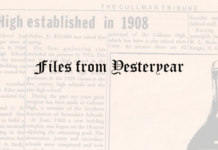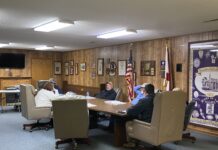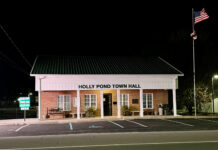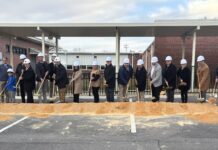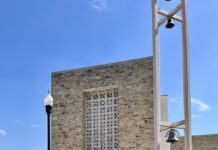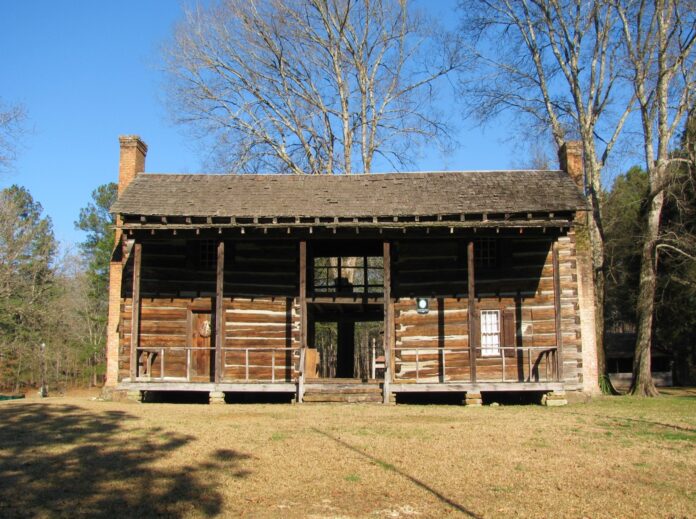
MONTGOMERY, Ala. – The Alabama Historical Commission and the Alabama Trust for Historic Preservation this week announced the 2020 Places in Peril, a program that highlights significant endangered properties. Since 1994, the Alabama Historical Commission and the Alabama Trust for Historic Preservation have joined forces to sponsor the program to call public attention to a select number of Alabama’s threatened historic and archaeological sites to bring awareness to significant historic places that suffer from neglect, lack of financial support or are threatened with demolition.
Places in Peril seeks to rally local and statewide support to elevate these sites, facilitate their preservation and assure they remain in their communities for years to come. Endangered properties can be saved and returned to their places as treasured landmarks. Places in Peril has helped save many important landmarks that may otherwise have been lost. Over the course of 25 years, the program has highlighted more than 250 resources.
Sites on the 2020 Places in Peril listing include Union High School, Monroeville (Monroe County); Bonneau-Jeter Hardware, Elba (Coffee County); Fite & Fite Law Office, Hamilton (Marion County); Harris Place Morning Star North Cemetery, Cuba (Sumter County); John Looney House, Ashville (St. Clair County); Thompson Chapel A.M.E. Zion Church, Opelika (Lee County); Uchee Methodist Church, Hatchechubbee (Russell County); and West Blocton Theater, West Blocton (Bibb County).
“Places in Peril is an immensely valuable program to elevate and streamline preservation efforts for sites across our state that are under the threat of demolition or deterioration. These campaigns have been successful in saving cherished places for future generations,” said Lisa Demetropoulos Jones, executive director, Alabama Historical Commission and state historic preservation officer.
“The Places in Peril program is a perfect opportunity to inspire communities to rally together to save vulnerable structures. Not only are these places worth saving, their stories are, too,” said Eddie Griffith, Alabama Historical Commission chairman. “Over the years that Places in Peril has highlighted the plight of threatened properties, their recognition through this program has inspired their restoration carrying their stories forward to future generations of Alabamians.”
“The Alabama Trust for Historic Preservation is pleased to continue its partnership with the Alabama Historical Commission on this important project,” said Katie Randall, vice president, Alabama Trust for Historic Preservation. “We realize now more than ever the importance of saving places that represent all Alabamians, places that tell the whole story of our state, especially those that represent the lives of the marginalized and the historically disenfranchised. By recognizing the most endangered places in our state and bringing their stories to light, we hope to advocate for a better and more equitable Alabama for all.”
Nominations for Places in Peril are accepted on an annual basis; any type of building, ruin, site or place is eligible for nomination. Places in Peril has listed theaters, schools, caves, jails, churches and houses. The application requires brief, but clear answers to a handful of questions regarding a property’s significance, threat and the designation of a local contact and local advocacy group with the capacity to leverage the support and coverage provided by the listing. Property owner permission and current, good quality photographs of the property are also required. The nomination period for Places in Peril 2021 will open May 1, 2021, to coincide with National Historic Preservation Month, a nationwide movement to celebrate and promote historic places and heritage tourism.
Union High School, 1021 Clausell Road, Monroeville, Monroe County
Union High School is located on the grounds of the former Bethlehem Industrial Academy in Monroeville’s African-American Clausell community. Bethlehem Baptist District #2 built and operated Bethlehem Industrial Academy – Monroe County’s only high school for African-American children during the 1940s and 1950s. On Sept. 20, 1956, the Bethlehem District sold the property to the Monroe County Board of Education which then constructed the present building originally known as the Union High School for African-Americans. Union High School was an Equalization School, structures built in the 1950s for African-American children as a last-ditch effort to stave off integration in the South. Once integration became the law of the land, many communities owned duplicate facilities that were costly to maintain resulting in many situations where these Equalization Schools were closed and abandoned – wasting public resources and destroying Black material culture and educational history.
Union High School closed in 1970 and students were transferred to Monroe County High School. On Nov. 9, 1984, the school property reverted to the Bethlehem Baptist District Association #2 for religious and community use, including a Head Start program that began in 1967.
The school has suffered from vandalism and is under threat due to the significant costs of bringing the building up to code. The preservation of this property is vital to Monroeville’s Clausell community. Through a Certified Local Government grant provided by the Alabama Historical Commission, the City of Monroeville will perform an architectural survey of the Clausell neighborhood providing additional history and context of this historic African-American community.
Bonneau-Jeter Hardware 217 Court Avenue, Elba, Coffee County
On three separate occasions, 1929, 1990 and 1998, downtown Elba has suffered damage from floodwaters in the area. John Bonneau and Hendrix Jeter’s hardware store, constructed in 1903, sits opposite the National Register of Historic Places-listed Coffee County Courthouse. The hardware store business eventually expanded to include a funeral home. In 1956, the store closed its doors, and in the same year, Elba Drug Company opened a location there. As the years passed, new businesses operated on site. It was occupied until 2009 and has sat vacant and deteriorating since then. In September 2020, Hurricane Sally caused significant roof damage, resulting in significant water damage to the inside of the structure.
New owners, Jim and Laurie Chapman, are dedicated to the building’s preservation and are hopeful of its restoration, particularly as downtown Elba is on the cusp of a renaissance. Recent improvements include a community garden, mural project, community-built playground, levee walkway, dog park, and a new splash pad. While these various projects are an improvement to Elba’s quality of life, additional assistance and planning is needed to preserve the downtown’s history. The City of Elba has been a driving force in the downtown revitalization and has established a Historic Preservation Commission to assist with preservation activities.
Fite & Fite Law Office, 818 Military St. S, Hamilton, Marion County
The Fite & Fite Law Office in Hamilton has withstood the test of time since the late 1800s. The two-room wooden clapboard law office sits on the property of the Earnest Baxter Fite Mansion, which was listed in the National Register of Historic Places in 1997. Local lawyer Bus Stanford constructed this building in 1882 at the same time the county seat for Marion County was moved to its present location in Hamilton. Attorney Bloomer Rankin Fite purchased this law office in 1896 when he moved to the area. In the following years, three generations of Fite lawyers used this building beginning with Bloomer Rankin Fite, followed by his son Ernest Baxter Fite, and finally his son Ernest Rankin Fite. All three generations of men were outstanding lawyers and politicians. The Fite & Fite Law Office has been moved on three occasions over the past 138 years to ensure its preservation. The office has remained with family members from 1896 until 2018 when the property, where it stands today, was sold and the current owners offered the building back to Ernest A. “Buddy” Fite, son of Rankin Fite, for preservation with an understanding that they could relocate the law office for site improvements. If not moved, the building would be demolished.
If this historic landmark is to survive, a new location and financing are desperately needed. The Fite family has offered the law office to the City of Hamilton with the intention that building that would display historical items from Marion County’s history. All preservation efforts have been led by Hamilton architect Andrea C. Harbison, who is hopeful to find a solution to protect the site. Raising funds to cover the expense of moving the structure along with added costs of repairs have been an enormous goal. According to Robert Gamble, retired Architectural Historian at the Alabama Historical Commission, “There are fewer and fewer of these wooden structures left to preserve and it would be a loss to not find a way to preserve it.”
Harris Place – Morning Star North Cemetery, 4044 Dove Road, Cuba, Sumter County
The Mississippi Band of Choctaw Indian Nation held the property now known as Harris Place- Morning Star Cemetery from 500 B.C. until 1830 when it was transferred to the United States government as part of the Dancing Rabbit Creek Treaty. Richard Harris established this cemetery after he moved to Alabama before the Civil War. This family cemetery includes burials from the Harris, Grant and Bourdeaux families, as well as the enslaved peoples who died while held in captivity.
Henry Clay Wallace, born in 1858 to enslaved parents Mose and Betsy Wallace, purchased several hundred acres of land between 1922-1927, including the Harris Place Cemetery. Wallace obtained the tract of land with the cemetery because his deceased parents and other family members were buried there. Under new ownership, the cemetery’s name was changed to Morning Star Cemetery, although many in the community still refer to it as the Harris Cemetery.
Over the years, the cemetery has suffered damage due to the harvesting of timber. Sadly, many graves have been lost due to overgrown vegetation, missing monuments and other funerary objects that assisted in identifying loved one’s graves. The unknown burials and deferred upkeep over the years continue to threaten the cemetery. The Alabama Historical Commission listed the cemetery in the Alabama Historic Cemetery Register on Jan. 28, 2019 and has also provided state grants for locating unmarked graves and to erect fencing.
John Looney House, 4187 Greensport Road, Ashville, St. Clair County
The Looney House was home to War of 1812 veterans John Looney and his oldest surviving son Henry. The Looneys helped build Fort Strother on the Coosa River and fought in the Battle of Horseshoe Bend in 1814. In 1817, the Looney family moved from Tennessee settling in what is now St. Clair County, where they built their home in 1818 near a spring on Beaver Creek. Severe flooding in the area forced the Looneys to dismantle and relocate their home log-by-log to higher ground.
The John Looney House is an excellent example of pioneer architecture. It was constructed entirely by hand with native materials, including heart pine floors and skinned pine rafters, sitting atop a locally quarried stone foundation. It is possibly the oldest standing two-story dogtrot house in Alabama. After their patriarch’s death in 1827, the house passed to Henry Looney who sold it in 1882 to John L. and Sam Houston Lonnergan, remaining in their family for 65 years. Col. Joseph R. Creitz purchased it in 1947 and later deeded it to the St. Clair Historical Society in 1972. The Society is working with the St. Clair County Historical Development Commission, Ashville leaders, and other community groups in their efforts to preserve the Looney House and St. Clair County’s history.
An archive for local history, the John Looney House and its authentic donated furnishings, quilts and artifacts are excellent examples of the pioneer lifestyle in early 19th century Alabama. It is a popular site for school class trips. Students learn about how their ancestors lived and gain knowledge about the War of 1812 and the Creek Indian War of 1813-14. The house is listed in the National Register of Historic Places and the Alabama Register of Landmarks and Heritage.
The greatest threats to the Looney House are deferred maintenance caused by a lack of funds and weathering. It has been more than 50 years since the last restorative work was performed in the I970s when concrete was used as chinking. The concrete is more destructive than restorative because it creates a moisture barrier where rainwater continually runs over the concrete and over time has rotted out the original logs. There has also been substantial deterioration and damaged due to storms. The Alabama Historical Commission has supported this property with its Education Trust Fund grant program in recent years. Though the St. Clair Historical Society has been raising funds, the costs for repair exceed what it has been able to raise privately.
Thompson Chapel A.M.E. Zion Church, 187 Columbus Parkway, Opelika, Lee County
Opelika’s A.M.E. Zion Church was organized in 1872 by Minister Rev. John Ford and a team of laymen. The congregation of Thompson Chapel A.M.E. Zion Church built the church in its current location by 1878. The one-story building is supported by wood and brick with interior walls plastered over an original wood frame. Six stained glass windows enclosed by wood sashes are on both sides of the church and four stained glass windows are in the choir loft. The ceiling of the church consists of the original wood with heavy beams running horizontal and vertically, and the wood floors are stained. The main entrance faces Torbert Boulevard (now Columbus Parkway) with second entrance facing west. A connecting parsonage was added in 1919; the one-story home is made of brick and contains six rooms, a hall and one bathroom.
The church’s membership includes the first African-American doctor in Opelika, Dr. J.W. Darden, and Mrs. Bessie Brady and Mrs. Eugenia Parks who established kindergarten classes for African-American students. From 1964 to 2014, Dr. A.L. Wilson led the congregation and the church experienced significant growth. Wilson immediately became involved in the community leading the church and followers to participate in and promote the Civil Rights Movement. The church was listed in the Alabama Register of Landmarks and Heritage Oct. 19, 1979.
Over the years, the church has suffered significant water damage due to a leaking roof. The intrusion has also caused the plaster of the sanctuary walls to buckle and peel and the trim to rot. The floors also exhibit damage. This present condition makes it difficult to hold comfortable services. Repairs are needed soon to ensure preservation and prevent further damage.
Uchee Methodist Church, Hatchechubbee, Russell County
Rural Russell County’s Uchee Methodist Church is an excellent example of the Greek Revival form. This circa 1859 church building reflects the popularity of the style during the antebellum period. The church is constructed of lapped weatherboard and cut square nails and rests on sills about nine inches square, which in turn sit on a brick pier foundation.
The Uchee Methodist Church congregation has its earliest record in 1833, when the Chattahoochee Mission of the Alabama Methodist Conference was established in Montgomery. Settlers arrived in this part of the state via the Federal Road from Columbus and settled what was then the southwest frontier. When Uchee Chapel Methodist Church discontinued services on Oct. 2, 1989, the building and property reverted to the C.J. Williamson estate. The estate sold the church building and property to attorney Mark Carter in 2008. Mr. Carter donated the church building and the property to the Russell County Historical Commission in September 2020 for its continued preservation. Uchee Methodist Church was listed in the National Register of Historic Places on July 3, 1997.
The church building needs a new roof and window repair. The roof and window issues have allowed mold to grow on the inside walls, making occupancy hazardous. The deteriorated roof has also allowed animals to enter the building. Along with the mold, the inside walls are cracked, and the ceiling plaster is falling. Funds are desperately needed to preserve this church, so the significant history and development of the area is not lost.
West Blocton Theater, 1110 Main St., West Blocton, Bibb County
West Blocton, located in in north-central Alabama, is home to the Cahaba Lily Festival each May. The former coal mining town sprang up near the banks of the Cahaba River in Bibb County during the late 19th century. West Blocton was built alongside Blocton, a “company town” founded in the 1880s by Truman Aldrich, who established the Cahaba Coal Mining Company.
Incorporated in 1901, West Blocton experienced rapid growth with many businesses quickly opening to serve the needs of the miners and their families. In 1907, the first theater opened as Tuggle and Harvey’s Theatorium. In March 1914, the theater suffered damaged after the stage curtain, piano, chairs, and other articles caught fire from a gasoline powered projector. In July 1927, a colossal fire devastated the town of West Blocton, burning 20 residences and dozens of businesses on Main Street, including the Theatorium. Without insurance and in financial ruin, many residents and businesses left the area.
The theater owners persevered and rebuilt the theater, renaming it the Tuggle Theater and reopened Wednesday, Nov. 16, 1927. It featured 675 seats and like many theaters in the American South, the theater included a segregated balcony reached by an exterior stairway. Following the 1929 stock market crash, the theater changed ownership, was renamed the West Blocton Theater, and began showing “talkies.” Ownership changed again, and the theater was renamed the Strand in 1930. The worsening years of the Great Depression resulted in the theater’s temporary closing. The Strand eventually reopened but showed its last movie on Oct. 21, 1962. In 1983, the Cahaba River Authority acquired the theater, but funds to rehabilitate it could not be secured, as the town continued to wither following the demise of the coal industry.
The West Blocton Commercial Historic District is listed in the Alabama Register of Landmarks and Heritage as an intact, early 20th century commercial center in a small, coal mining town in central Alabama. The buildings reflect an era when the coal mining industry positively impacted the town economically. After the decline of the industry in the area, most of the buildings have been vacated and have declined over time mostly due to neglect. Friends of the Cahaba River National Refuge hope to find additional financial assistance for the theatre’s restoration efforts, propelling the Town of West Blocton forward in its own revitalization with the theatre at the heart of those efforts.
For more information about the Alabama Historical Commission, or Places in Peril, please visit www.ahc.alabama.gov or contact Jake Williams at jake.williams@ahc.alabama.gov.

